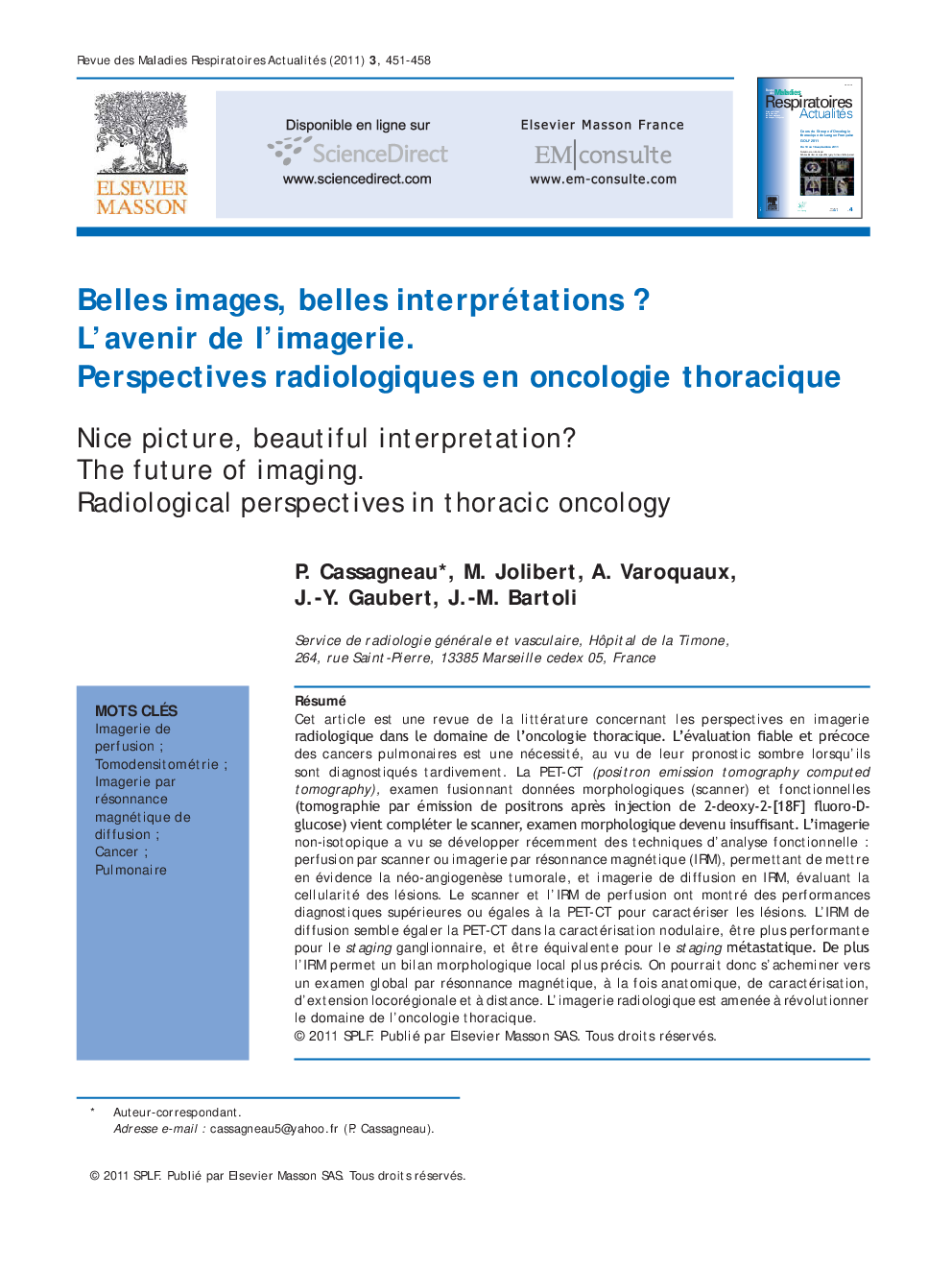| Article ID | Journal | Published Year | Pages | File Type |
|---|---|---|---|---|
| 4216123 | Revue des Maladies Respiratoires Actualités | 2011 | 8 Pages |
Abstract
This article is a review of the literature about the prospects in radiological imaging in the field of thoracic oncology. The early and reliable assessment of lung cancer is a necessity, given their poor prognosis when diagnosed late. PET-CT (positron emission tomography computed tomography), combining morphological and functional (positron emission tomography after injection of 2-deoxy-2-[18F] fluoro-D-glucose) data, has taken advantage in the association with Computed tomography (CT) in the assessment of solitary nodules and the staging of lung cancer. The non-isotopic imaging has recently seen the development of functional analysis techniques: perfusion imaging with CT or magnetic resonance (MRI), to detect the tumor neoangiogenensis, and diffusion MR imaging, which measures the cellularity of lesions. CT and perfusion MRI showed diagnostic performance at least equal to PET-CT for characterizing lesions. Diffusion MRI is likely to equal PET-CT in characterizing nodule, be more effective for lymph node staging, and be equivalent for metastatic staging. In addition MRI allows more accurate local morphological assessment. It could therefore move towards an “all inclusive” exam, allowing anatomical characterization, and the assessment of locoregional and distant extension. Radiological imaging is brought to revolutionize the field of thoracic oncology.
Keywords
Related Topics
Health Sciences
Medicine and Dentistry
Pulmonary and Respiratory Medicine
Authors
P. Cassagneau, M. Jolibert, A. Varoquaux, J.-Y. Gaubert, J.-M. Bartoli,
